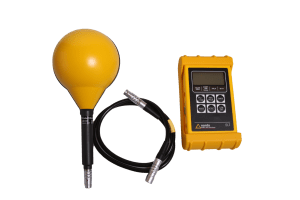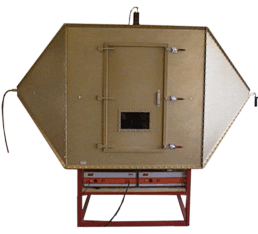EMC Testing and Pre-Compliance Services
- Expertise
- EMC Testing and Pre-Compliance Services
All electric products must be EMC tested for electromagnetic compatibility. We have our own EMC test laboratory, where we can EMC test the products, we develop. EMC testing ensures that the product can function properly without disturbing other electrical products or itself. It is thus ensured that no disturbing electromagnetic interference occurs. In addition, the product must not be disturbed by any electromagnetic interference of other electrical products.
When we develop products, it is always clearly stated in the specifications which EN standards we conduct EMC compliance testing according to. These tests are performed on the electronic devices we have developed for your product. Naturally our own standard products must also pass the EMC testing before released to the marked.
You can choose to have only the electronics we have developed tested. But we also offer to perform pre-testing of your complete, finished product, in which the developed electronics are included as part of a complete whole.
This means that the product passes safely through tests at certified test providers both in DK and in other countries, e.g. TÜV in Germany.
In our experience, such a pre-test is a really good idea, as there is typically a long waiting time for the certified providers, and it is very expensive if the product must go through several tests with the certified providers.
Over the years, we have invested in a wide range of special test equipment that allows for high-level testing.


An EMC test will typically consist of a combination of the elements below.
All our standard products have a declaration of conformity, which you can request by emailing lsc@lscontrol.dk or you may download it from our product catalogue website by selecting the product in interest and go to section ‘other documentation’.
If you have electronic devices developed specifically to your requirements the EMC testing requirements are part of the requirements specifications of the development project.
Our developers have many years of specialist knowledge and experience in working with compliance with EMC standards.
It is thus possible to receive a complete test report with measurements, description of test setup and detailed photo documentation in relation to the selected EN standard. There could be EN 60335 standard for electrical / electronic appliances for households and the like.
We also work with EN61010-1 for laboratory systems, often together with EN61000-6-3 and EN61000-6-1.

Since 1969, we have been supplying electronics for control, regulation and control to quality-conscious companies
Get important information about products which get you ahead of your competitors, the market, technical stuff and much more. All for free and just 4-6 times a year.
LS Control A/S | Copyright © 2022 All rights reserved.